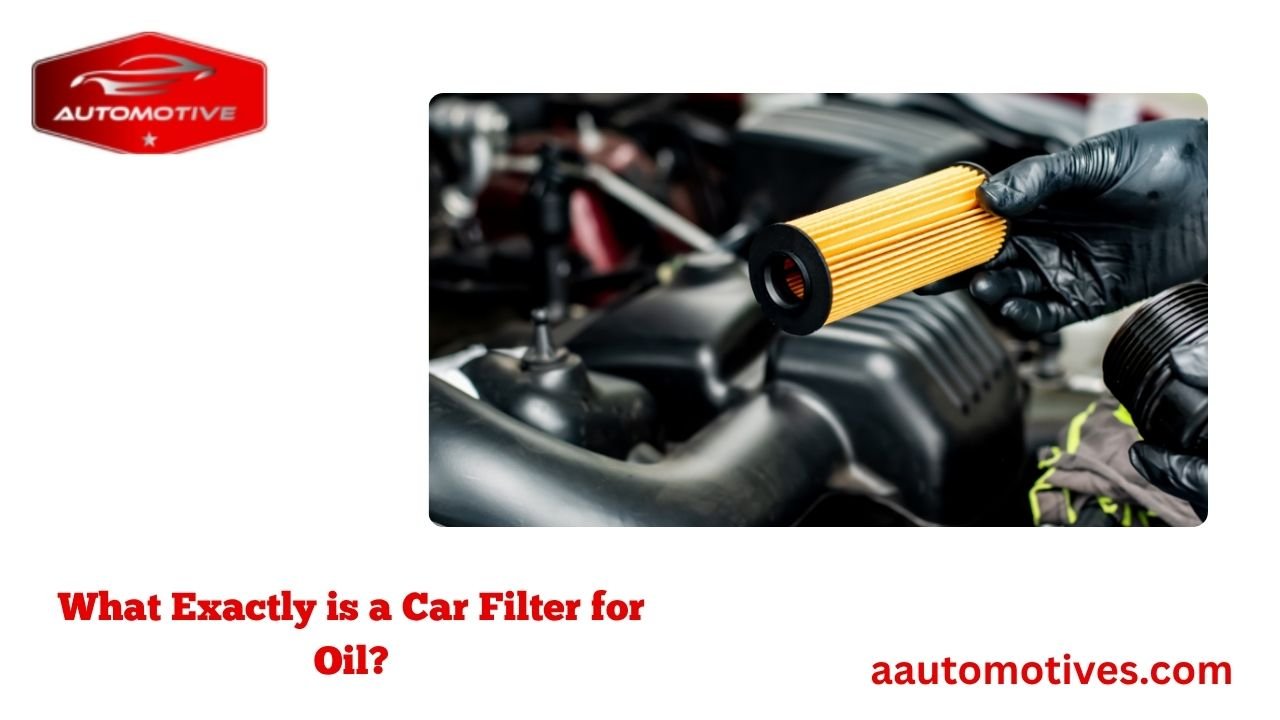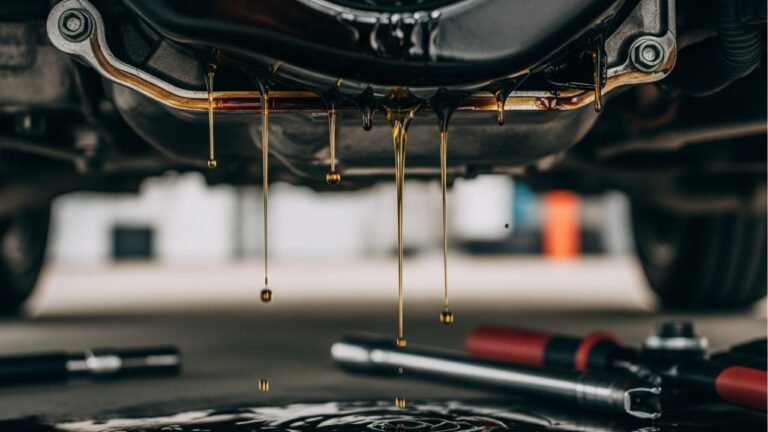Why Your Car’s Engine Trusts the Oil Filter More Than You Think

Imagine going for a morning jog in the city without a mask. You breathe in dust, pollution, and grime—doesn’t sound healthy, right? Now picture your car engine doing that every single time it runs, without a proper car filter for oil. That’s how vital this tiny component is.
Most car owners forget it exists. But the oil filter is the gatekeeper. It stops impurities like metal shavings, dirt, and sludge from harming your engine. I learned that the hard way. My old sedan started making a weird ticking sound. Turns out, I’d ignored the oil filter for too long. A $15 part almost cost me a $3,000 engine repair.
In this article, I’ll walk you through the magic of the car filter for oil, its types, how it works, and why ignoring it is like feeding your engine junk food. Whether you’re new to cars or a seasoned driver, this guide has something for you.
What Exactly is a Car Filter for Oil?

Most oil filters are about the size of a soda can. Inside, there’s a maze of filter paper folded like an accordion. The oil passes through this media, which traps debris while allowing clean oil to flow freely. Some premium filters even have anti-drain back valves and bypass valves, ensuring oil delivery even when the filter is clogged.
Here’s something that might surprise you: even a new engine generates microscopic metal particles during normal wear. Without a car filter for oil, those particles would circulate endlessly, acting like sandpaper on your engine. That’s why this little canister is more important than it looks.
Why the Oil Filter is More Than Just a Part
It’s easy to see a car filter for oil as just another line item in your maintenance bill. But think of it as your engine’s bodyguard. It keeps out the nasties so your car can run clean and smooth.
I remember a friend who owned a Toyota Corolla that lasted over 300,000 miles. His secret? Regular oil and oil filter changes—religiously, every 5,000 miles. That’s the kind of difference a $10-$20 filter can make over time.
And get this: when your oil filter gets clogged, your engine might still run, but it’s being slowly starved of clean oil. That causes poor performance, overheating, and in worst cases, total engine failure. It’s like running a marathon without water.
In short, your car filter for oil doesn’t just keep oil clean—it keeps your engine alive.
How the Oil Filter Works: A Simple Breakdown
We often underestimate small components because we don’t see them working. But under the hood, the car filter for oil works non-stop. It’s a pressure-driven system that works every time you start the engine.
Here’s what happens:
Oil is pumped from the oil pan through the filter.
It enters the filter through tiny holes around the base.
The oil flows through the filter media—a thick paper-like material.
Clean oil exits through the center hole, moving on to lubricate the engine.
Some filters also include:
Anti-drainback valve: Prevents dirty oil from settling back in the engine.
Bypass valve: Allows oil to skip filtration if the media is clogged (better dirty oil than no oil).
End cap: Seals and directs oil correctly inside the filter.
It’s elegant and simple. Like a coffee filter, but instead of caffeine, it gives your engine the lubrication it needs.
Types of Oil Filters and Which One You Need
Not all car filters for oil are made equal. Choosing the right one can be confusing, but it matters more than you might think. Let’s break them down in a simple table:
| Type of Oil Filter | Best For | Notes |
|---|---|---|
| Full-Flow Filters | Everyday drivers | Filters all oil before engine use |
| Secondary (Bypass) Filters | High-performance or diesel engines | Filters a small portion continuously |
| Cartridge Filters | Modern European cars | Eco-friendly, no metal casing |
| Spin-On Filters | Most American/Japanese cars | Easy to replace |
| Magnetic Filters | Engines with metallic debris issues | Traps metal particles effectively |
If you drive a regular sedan, chances are you use a spin-on filter. It’s easy to replace and widely available. But if you’re rocking a European luxury car or a diesel truck, you might need something more specialized.
It’s always wise to check your owner’s manual. Trust me, using the wrong filter can do more harm than skipping an oil change.
How Often Should You Replace a Car Filter for Oil?
This one’s a hot debate. Some say every 3,000 miles, others stretch it to 10,000. Here’s the real deal: follow your oil change interval, and change the filter with it.
I used to delay mine, thinking it wasn’t urgent. Until one winter morning, my car gave me the dreaded oil pressure warning light. Turns out, the filter was so clogged it restricted oil flow. Lesson learned.
In general:
Conventional oil: Change every 3,000–5,000 miles
Synthetic oil: 7,500–10,000 miles
Filter: Every oil change (don’t skip it!)
If you drive in dusty areas or make short trips often, consider changing more frequently. Filters can clog faster in harsh conditions.
Signs Your Oil Filter Needs Replacing
Let me guess—you don’t look at your oil filter until something goes wrong. That’s how most of us learn. But there are warning signs you should never ignore. A bad car filter for oil doesn’t just get dirty; it becomes a liability.
Here are the red flags:
Low oil pressure light: The filter might be blocked.
Metallic sounds: Poor lubrication can cause engine parts to grind.
Dirty or thick oil: The filter isn’t doing its job.
Exhaust smoke: Contaminated oil leads to poor combustion.
Overheating: Lack of oil flow means increased friction and heat.
Once, I had a car that started misfiring out of the blue. I checked everything—spark plugs, fuel injectors, even the ECU. The culprit? A $12 oil filter that had collapsed inside. Sometimes, the smallest part causes the biggest problems.
The Cost of Ignoring Oil Filter Maintenance
This one hits home. I ignored my filter once, and my engine almost died. It started with a ticking sound, then sluggish performance, then smoke. I thought it was something big—but the root cause was a neglected car filter for oil.
A new engine can cost upwards of $4,000. A new filter? Less than $20. The math doesn’t lie.
Here’s what skipping filter changes can lead to:
Engine wear and tear
Oil starvation
Sludge buildup
High emissions
Reduced fuel efficiency
It’s like skipping brushing your teeth because toothpaste costs money. The long-term cost is way higher. Take care of your oil filter, and your car will return the favor.
Choosing the Right Oil Filter: It’s More Than Brand Loyalty
Choosing the right car filter for oil isn’t just about picking the most expensive one on the shelf or going with a brand you saw on TV. It’s about compatibility, quality, and trust. I’ve made the mistake of going cheap before, thinking all filters are the same. A few thousand miles later, I noticed my engine running rough. Coincidence? Probably not.
Here are a few tips to make the right choice:
Match it with your vehicle’s specs. Always check the manual.
Look for a reliable brand. Fram, Bosch, Mobil 1, and K&N are solid choices.
Consider filter media. Synthetic blends last longer and trap finer particles.
Check the anti-drainback valve. This is essential for cars with top-mounted filters.
It’s worth spending an extra $5–$10 for peace of mind. Think of it as buying a helmet for your engine. You want quality protection, not something that’ll crack under pressure.
DIY vs Mechanic: Should You Change the Filter Yourself?
Let’s be real—changing the car filter for oil isn’t rocket science. If you can flip pancakes, you can change an oil filter. I started doing it myself in college with a second-hand Honda Civic. It wasn’t glamorous, but it saved money and gave me a sense of control.
Here’s what you’ll need:
Oil filter wrench
Drain pan
Gloves and rags
New oil and oil filter
Funnel
The process? Unscrew the old filter, let it drain, apply a bit of oil to the new filter’s gasket, screw it on, and you’re done. Add fresh oil and check levels.
But—and this is big—if your car is under warranty or you’re uncomfortable with tools, let a trusted mechanic do it. Sometimes paying for expertise is the smarter choice.
Changing the filter yourself is satisfying, though. It’s like feeding your car with your own hands. There’s something sacred about that ritual.
Synthetic vs Conventional Oil Filters: What’s the Deal?
Ah, the age-old question: should you go synthetic? When it comes to car filters for oil, synthetic doesn’t mean it’s made from plastic. It refers to the filter media—what’s inside doing the actual filtering.
Conventional filters use cellulose fibers (like thick paper). They’re fine for everyday driving and shorter oil change intervals.
Synthetic filters, on the other hand, use finer fibers (like glass or polymer blends). They trap more contaminants and last longer. They’re ideal if:
You use synthetic motor oil
You follow extended oil change intervals
You drive under harsh conditions (towing, cold climates, dusty roads)
Think of it this way: conventional filters are like kitchen sponges. Synthetic ones are like HEPA air filters. Both clean, but one does it better and longer.
In my experience, synthetic filters gave me peace of mind during long road trips. No worries about clogs or pressure drops. Just smooth driving.
The Hidden Relationship Between Oil Filters and Engine Performance
You might not notice it right away, but a clean car filter for oil can improve your engine’s performance. It’s like taking a deep breath after clearing your sinuses—you feel the difference immediately.
When your oil flows cleanly and freely:
Friction is reduced
Engine parts stay cooler
Fuel efficiency improves
Acceleration feels smoother
I once upgraded from a low-grade filter to a premium synthetic one before a cross-country drive. The result? Better throttle response and a slight bump in mileage. It wasn’t magic—just better lubrication and cleaner oil flow.
A clogged or cheap filter can cause oil starvation in specific engine areas. That’s when wear starts to pile up. Performance doesn’t just drop suddenly—it fades, bit by bit, until one day your car doesn’t feel like it used to.
Eco Impact: Are Car Filters for Oil Bad for the Environment?
Let’s not ignore the elephant in the garage—disposable car filters for oil contribute to waste. With millions of oil changes happening yearly, that’s a lot of metal and soaked filter media going to landfills.
But here’s the good news:
Many shops and service centers recycle used filters
Eco-friendly cartridge filters are now replacing traditional spin-on ones
Oil filter crushers remove residual oil for cleaner disposal
If you’re a DIY person, collect used oil and filters in a sealed container and drop them off at a recycling center. Most auto parts stores accept them for free.
Small steps make a big difference. Choosing reusable or recyclable filters when possible helps reduce your carbon tireprint. It’s like brushing your teeth and using a water-saving tap—good for you, better for the planet.
Oil Filter Myths You Should Stop Believing
Let’s bust a few myths. I’ve heard them all—at garages, in online forums, and even from seasoned mechanics. But the truth matters, especially when your engine’s life is at stake.
Myth 1: You Don’t Need to Change the Filter Every Time
Wrong. The old oil leaves behind debris, and your old filter traps most of it. Reusing it is like putting clean clothes into a dirty laundry bag.
Myth 2: All Oil Filters Are the Same
Nope. They vary in build quality, filter media, and pressure tolerance. Using a bad one could mean leaks, bypass valve failure, or worse.
Myth 3: Premium Filters Don’t Make a Difference
They do. Better filters trap more, last longer, and support synthetic oils better. They’re like upgrading from fast food to a well-balanced meal.
Myth 4: It’s Okay If the Filter is a Bit Off-Spec
It’s not. Even slight mismatches in thread size or seal diameter can cause oil leaks or poor pressure regulation.
Bottom line? Don’t gamble with your car filter for oil. Facts over folklore, always.
Conclusion: Love Your Filter, Love Your Engine
At the end of the day, the car filter for oil is a small thing with a big job. It works silently, behind the scenes, every time you turn the key or press the start button. It doesn’t ask for much—just to be changed when needed and chosen wisely.
I’ve learned the value of this humble component through experience, mistakes, and a few roadside breakdowns. And if there’s one piece of advice I’d give every car owner, it’s this:
- Respect the filter.
- Change it often.
- Choose it carefully.
- Recycle it properly.
Your engine will thank you with years of smooth performance, fewer repairs, and better fuel economy. So next time you’re at the shop or under the hood, remember: that little canister isn’t just a filter—it’s your engine’s best friend.






